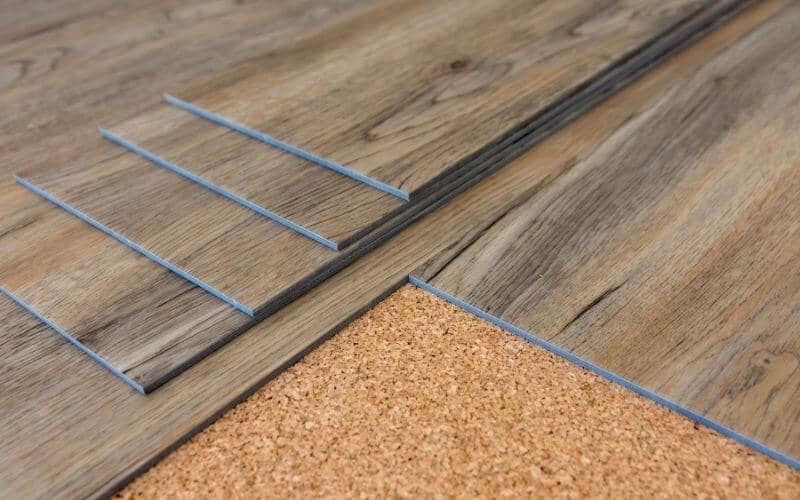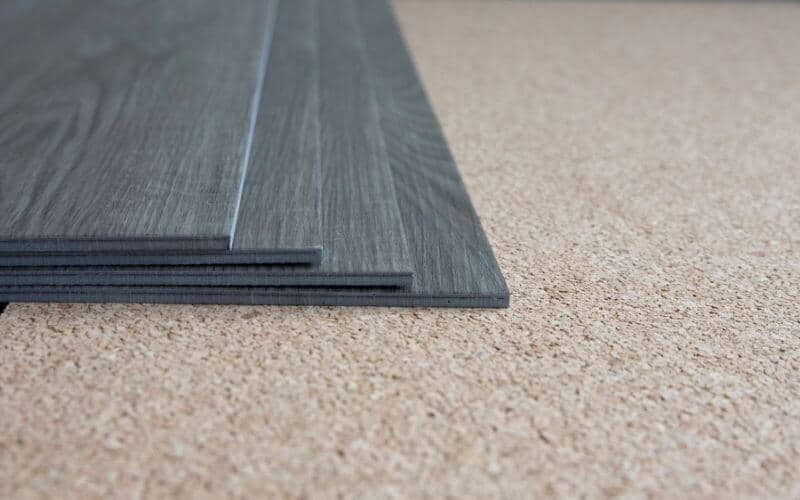Vinyl plank is also known as luxury vinyl. It is one of the easiest floating floorings to install and is mostly meant for leveled floors. It is widely known for its flexibility, budget-friendly, and long-lasting features.
An important question might pop up now and then; Can you install a vinyl plank over an uneven floor? Yes! Vinyl plank can be installed but on a slightly uneven floor. If the floor is unevenly high, vinyl plank is not the right flooring.
Read on as we throw more light on this.
Read: 7 best flooring for uneven floors
Things to do Before Installing a Vinyl Plank Over an Uneven Floor
Table of Contents
Before installing a vinyl plank over an uneven floor, some things need to be considered properly. The installation process might be tricky; hence, the need to be in safe hands.
Read on as we explain in detail.
1. Level Any High or Low Spot
Before you consider installing a Vinyl plank, you should first level or sand any deformity. This means that you have to sand down high spots in the concrete or fill in voids with a self-leveling mixture. You should also look for subfloor problems with a level or straight pipe.
Pour the floor leveler to the concrete subfloor and smoothen it with a trowel. Leave the levelers to dry for one day.
2. Remove All Baseboards
Before installation, remove all door case moldings, base shoe moldings, and baseboards and separate them. Removing all this makes the floor free and allows for a cleaner installation.
If a projection is hard to rectify, you can cut the planks to adjust around these projections.
Related: How to install baseboard molding
3. Clean the Debris and Dust
The presence of debris and dust might hamper the successful installation of vinyl plank over an uneven floor. It would prevent the vinyl plank flooring from properly clicking together. They can also cause gluing difficulties when applying adhesives.
So, it would help if you cleaned your subfloor before installing the vinyl plank. Clear or vacuum any debris around the vicinity.
4. Take Proper Measurements
You should consider the number of vinyl planks that would fit into your room. Calculate the width of your room and split it up by the width of the vinyl plank. This would help you know the number of the vinyl plank to fit into your room.
5. Plan Your Pattern
You should also consider the pattern of vinyl plank you would love. you can install vinyl plank flooring in various patterns. Choose the pattern you like and cut it to get the pattern requirement.
Also, combine the vinyl plank from different boxes equally to create a uniform look.
6. Cut the Vinyl Plank
Vinyl plank can be cut in many ways, depending on the tools available and how thick the vinyl plank is. Here are some tools you can use for cutting vinyl plank:
You can use a circular saw to cut vinyl plank. It is an excellent tool for cutting vinyl plank. Use a circular saw slowly to avert melting vinyl plank.
You can use a tile cutter to cut vinyl plank. Calculate and point out the place you would cut. Using the tile cutter, cut the plank to your desired shape.
We also have the T square. Using a T square, mark out a straight line. Also, using a utility knife, score out a line on the plank surface side. Tilt the plank along the scoreline to break it into two equal parts.
Related: How to cut VCT tile
How to Install Vinyl Plank Over an Uneven Floor
These are the steps required when installing a vinyl plank over an uneven floor.
Step 1
Put the first Vinyl plank at the intersection of your room, from the left-hand side. Using a carpenter’s shim or spacers, make a 3/8 extension opening between the wall and the vinyl plank flooring.
Step 2
Make sure that the groove of one vinyl plank fits seamlessly into the tongue of the other vinyl plank securely.
Step 3
Join the groove and tongue connectors of the vinyl plank and align the layer to finish the first row of vinyl planks.
Step 4
Keep on laying the vinyl flooring. Rap the vinyl plank and lock them rightly, using a rubber mallet and tapping block.
Step 5
If there is a space between the wall and vinyl plank on a column that can’t contain one full plank, you should calculate the size of this space. Then, Mark and cut the next vinyl plank rightly to fit into the space required.
You can cut planks with a hand saw or a circular saw.
Step 6
Start the next column with the remaining cut ends. The cut ends should be 6 inches long.
Step 7
Ensure that the vinyl planks join perfectly by placing them into the former column at an angle.
Step 8
Continue working down the room, making sure the layers are tightly fitted and the vinyl planks are joined.
Step 9
Do not forget to place spacers every few feet around the vinyl floor’s perimeter. When the installations are done, you can remove the spacers.
Step 10
The last step to take is to reinstall the baseboards. When you are done installing the vinyl floor, reinstall the baseboards. Install your finishing molds with the aid of a brad nailer. You can equally reinstall all evacuated appliances.
Read: How to fix vinyl plank flooring separating
Conclusion
Can you install a vinyl plank over an uneven floor? This question has been asked regularly. And yes, vinyl floors can be installed over a slightly uneven floor, but one needs to check the condition of the floor before installation.

